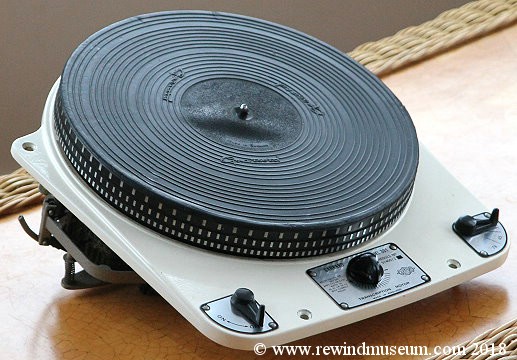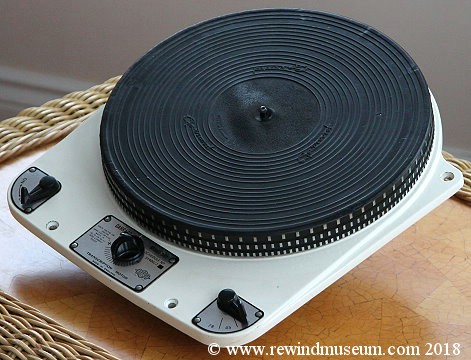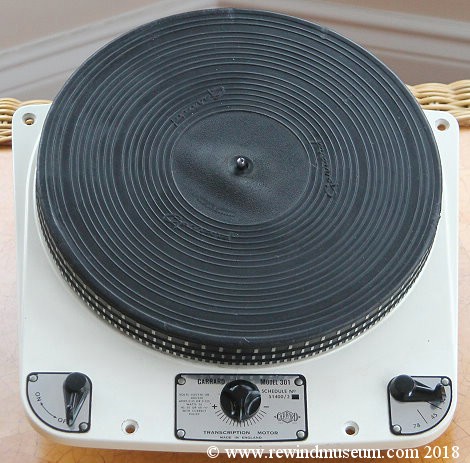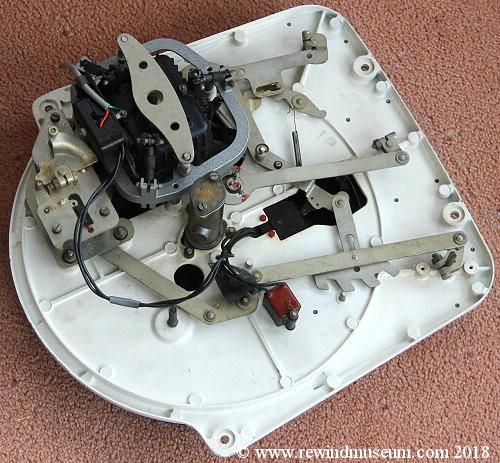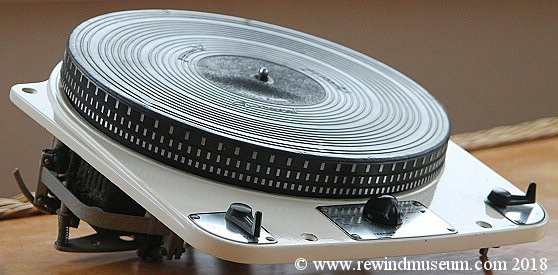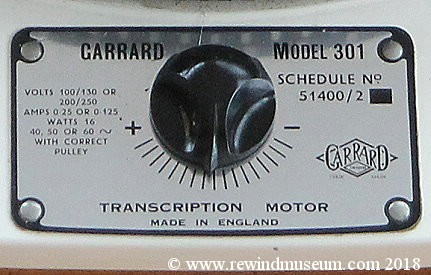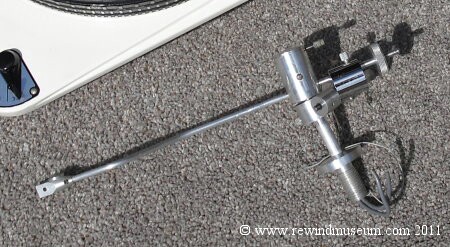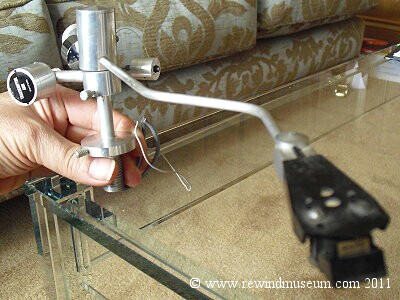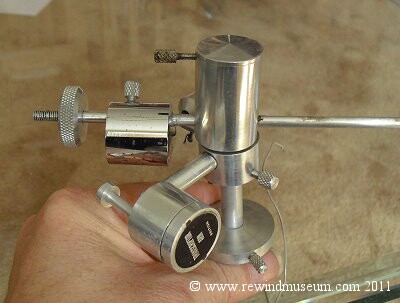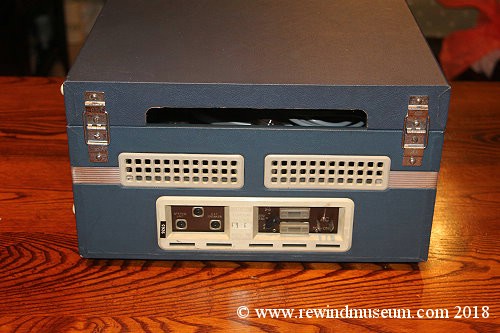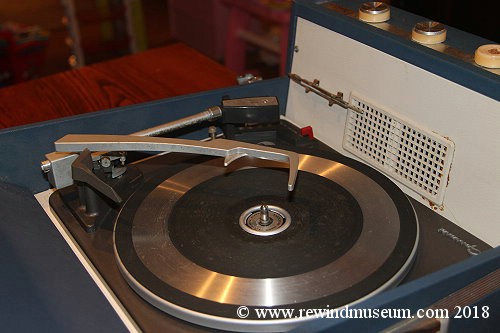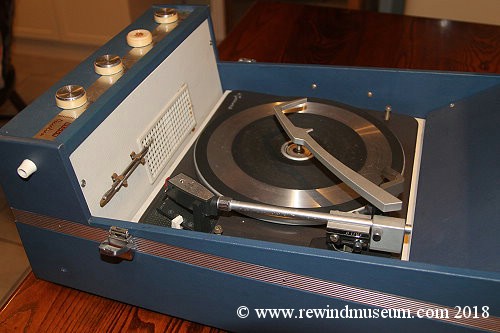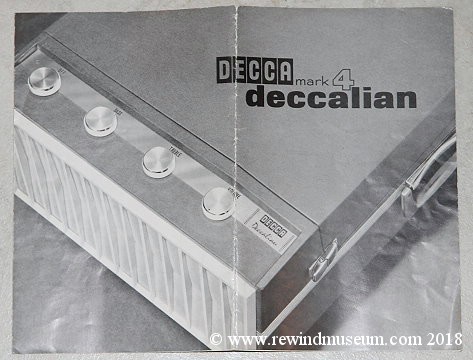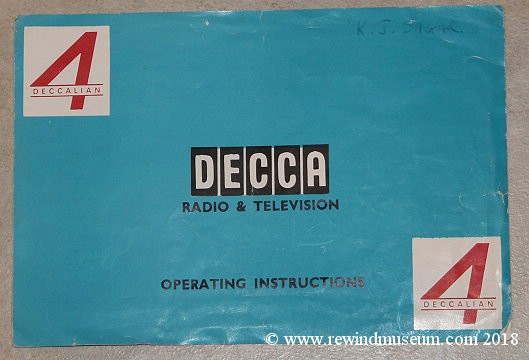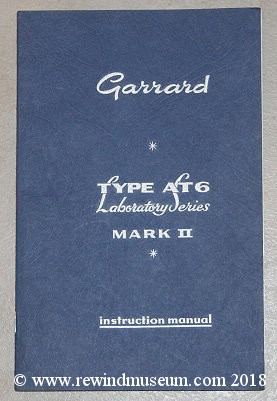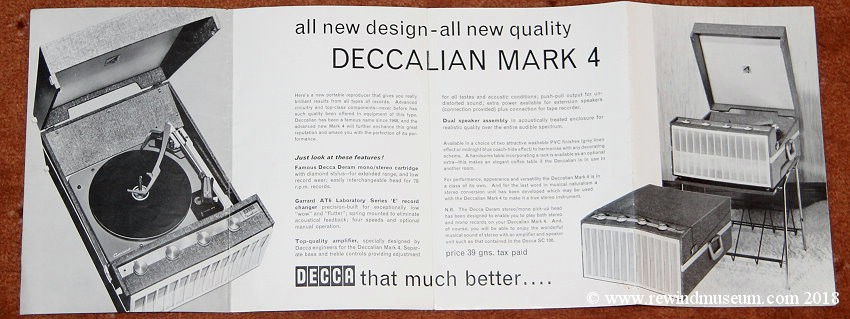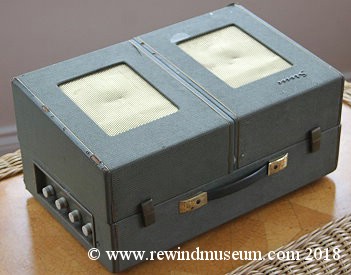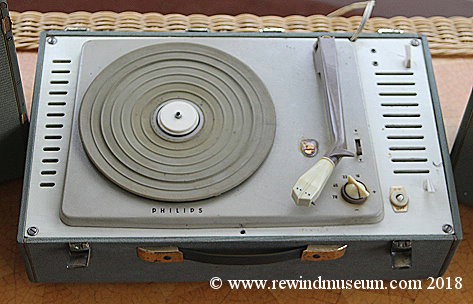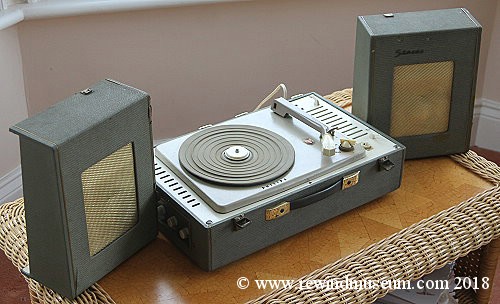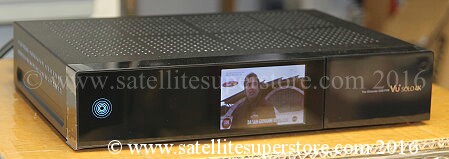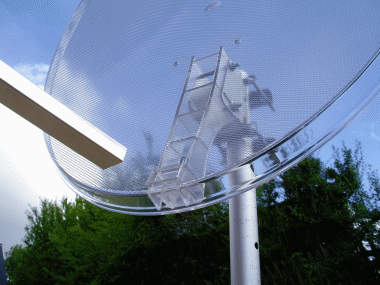Museum of early consumer electronics and 1st achievements
www.rewindmuseum.com
As a teenager I was a Hi Fi enthusiast. Indeed I built a radiogram from parts when I was 14 years old.
Most of the exhibits on this page were either owned by me from new or were bought second hand long
before e-bay or home computers.
1973. The Linn Sondek.
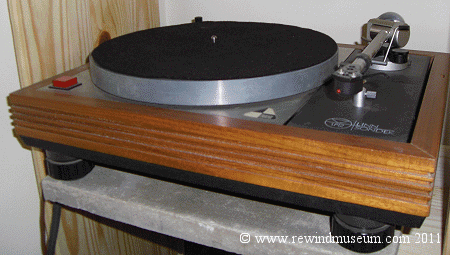
This particular unit was purchased brand new on the 15th April 1976 (an early model).
In 1980, the Ittok LVII arm and Asac cartridge were added.
(They replaced an SME pick up arm and Shure V 15 cartridge that was originally fitted)
These were also purchased brand new and all the packaging and manuals are in storage.
This Linn Sondek was one of the first to be manufactured and uses the Lenco motor. Various
upgrades were done to the turntable until Linn Products started charging for them!
This unit is still used every day.
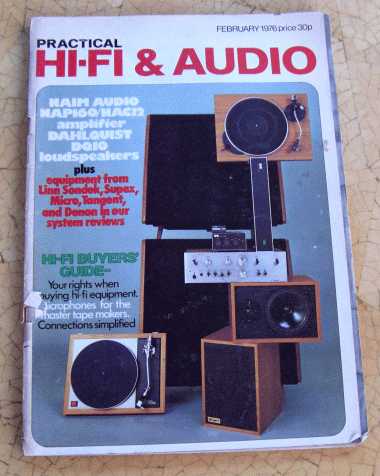
Practical Hi Fi and Audio Magazine. June 1976.
This magazine features the Linn Sondek turntable. Not long after it was first introduced.

The SME pick up arm.
"The best pick up arm in the world"

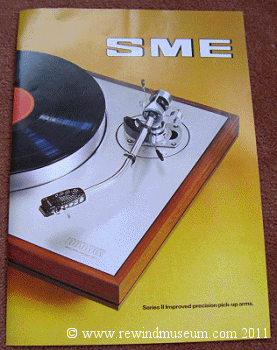
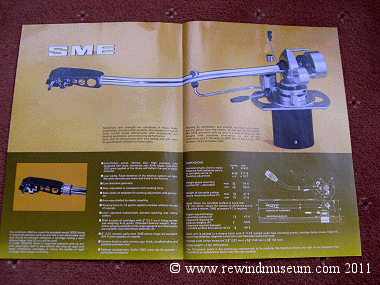
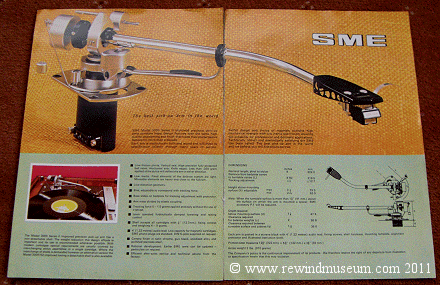
On the 4th Dec. 1973 I purchased a Gerard 401 turntable (for £25.95) and was disappointed to find
that SME pick up arms had sold out at all dealers before Xmas. On 3rd Jan 1973 I finally
received my SME Mk2 Improved tonearm.
Later that month an SME plinth was added and the turntable and arm fitted into it.
(as usual I kept the receipts so the dates are accurate). In Nov 1978 SME charged £14.54
including VAT to converted the arm to take a detachable headshell. In October 1978 the
F200 damper was also added (£16.95). I remember, just before buying the arm, reading
a review in one of the hi fi magazines and the reviewer agreed it was "the best pick up
arm in the world" To be fair, in those days nothing came even close!
In May 1976 (I still have the letter sent in for the advert), I sold my SME 2000 plinth
and Garrard 401 turntable.
I had purchased a Lynn Sondek and was using the SME arm with the Linn Sondek LP12.
Early in 1980 I sold the SME arm (after 8 years of use) and in March 1980 I purchased a
Linn Ittok arm and a Linn Asac cartridge (see above).
(I must apologise for not keeping these items. This sort of thing did not happen very often!)
I did, however, keep all the SME leaflets, invoices and letters safe and in storage
(so not entirely a total unlikely clearance brainstorm!)
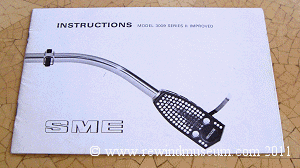
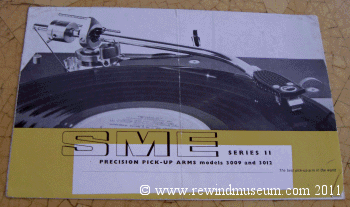
The 12-inch SME model was designed to reduce tracking error and in it's day it was not very
popular as most people considered the less inertia and tracking weight of the 9-inch model
outweighed any tracking error issues. Today, however, it is the 12-inch model that is by
far the most sought after by collectors.
The series 2 Improved model had the narrower counter weight (see pictures above.) In the late
1970s and early 1980s a number of companies made head shells with the same screw fixing
and were interchangeable. Here are the brochures about the SME plinth system
The SME Model 2000 Plinth System.
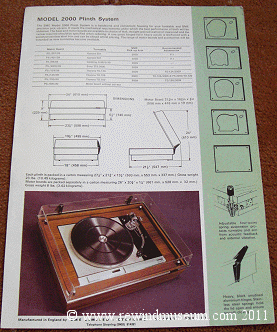
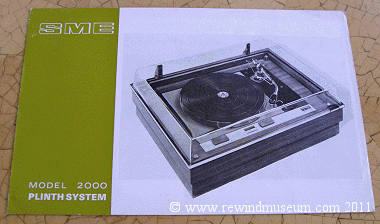
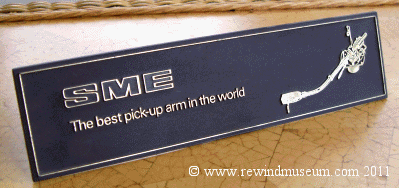
In the 1970s after visiting a Hi Fi show and seeing a display stand (see above) I rang SME
rather cheekily and asked if there was any chance they had a spare they could send me?
They sent one to me straight away free of charge!
It was on display in our living room next to the hi fi for over 20 years much to my wife's
annoyance. She could not understand why the room had items in that made it look
like a shop! I just thought it looked fantastic ..... anyway it made me happy
and still does as I now see it every day in my office.
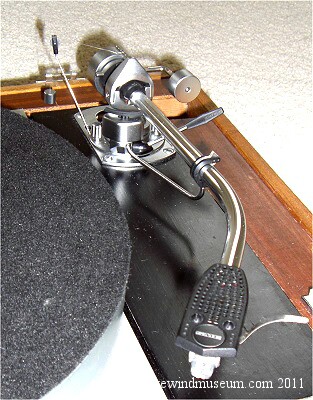
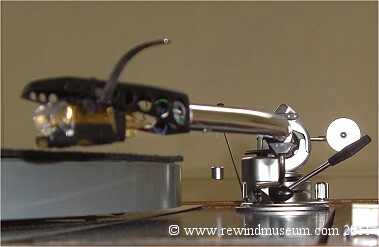
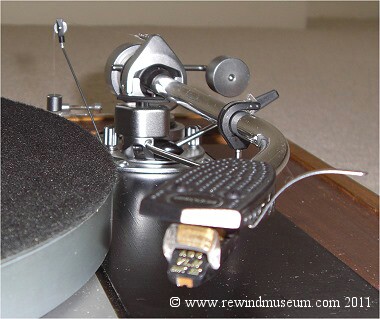
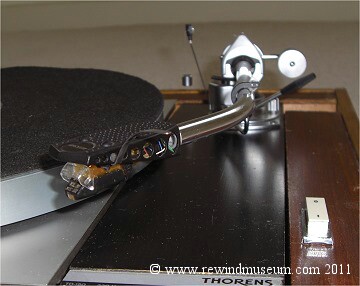
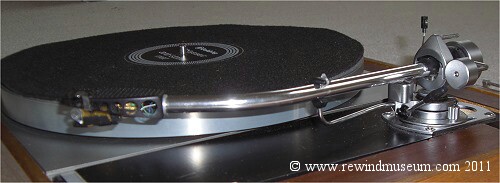
I always regretted (big time!) selling the SME arm and in Jan 2010 (30 years later) I obtained
another with a Thorens 150 turntable. You can see this one had an ADC VLM Mk II" cartridge
fitted. After all this time it is great to be the proud owner of another SME arm.
SME are still in business today and they make magnificent tonearms. They also make an
ultimate turntable to accompany "the best pick up arm in the world"
To the best of my knowledge, no one has ever challenged that statement ??

1966. Thorens TD 124.
(with Rega II tonearm.)
This unit is in mint condition.
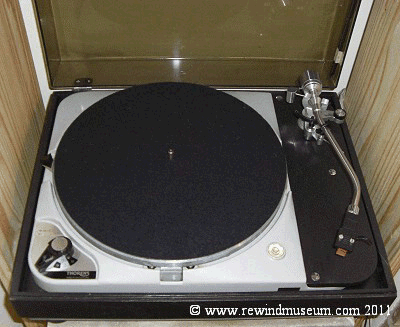
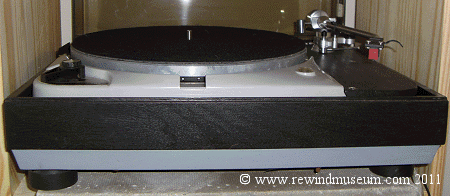
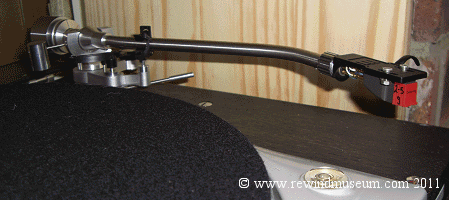
The Thorens TD 124 was first introduced in 1957 but the Mk 2 shown here is from 1966
This unit was bought from a friend in 1981. It was just a TD124 chassis (without arm or plinth).
The Linn Sondek plinth higher up the page was made of solid afromosia and it was decided to
make another plinth for the 124 using the same solid material (and paint it Saturn black)
and to the same dimensions. A joiner / cabinet maker was commissioned to build it.
The very early model Linn Sondek (see above) lid had small chrome hinges and this lid was used.
A new later model lid was fitted to the Linn with sprung hinges. Using the Sondek lid meant that the
need for an exact copy as far as plinth dimensions were required. An arm board was also made out
of a piece of solid oak and drilled for the Rega arm.
The Rega II arm was chosen as it was a good quality arm, received good reviews and it permitted the
use of an (SME type fixing) interchangeable head shell. This enabled easy testing and comparisons
of various cartridges at the time. Since the Linn Sondek only offered the 33 speed, the Thorens
offered the other speeds as well. The Thorens TD124 was a superb turntable and that is still the case
today. That is because, like some of the best (but very expensive) turntables today it was built
by engineers with a no compromise approach to design and manufacture. Many later turntables
were built by accountants and electronic engineers (not mechanical engineers) who tried to replace
engineering with electronics (which are cheaper). Unfortunately, the record - stylus interface is
mechanical and only highly engineered well designed turntables work well. After the 124 and before
the Linn Sondek (and at the same time as the Linn) mass produced units were built to a price and
performed poorly. The TD124 set the standard at the time and it is still very good even compared
to today's exclusive expensive state of the art turntable designs.
Although the pictures show a low cost Goldring 850 cartridge a number of interchangeable headshells
contain a variety of interesting cartridges. Details of these will be added later.
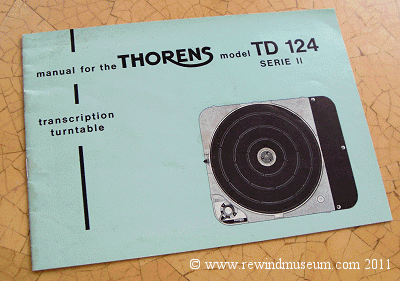
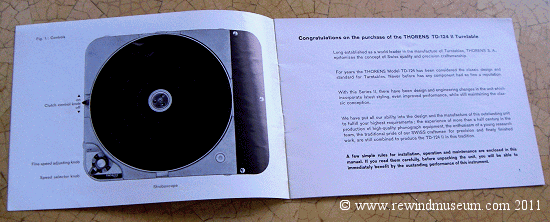
This original Thorens 124 manual was obtained in 2008 and is in very good condition.
The numbers on the back page suggest that it was published in 1966.
Shown below is an advert for Thorens turntables including the 124 Mk 2 from a February 1970 "Hi Fi Sound" magazine.
The TD124 Mk II was £46.75 in 1970 for the chassis without a plinth, tonearm or cartridge.
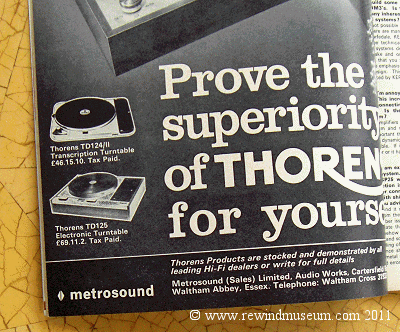 Here you can see a Thorens price list from 1963.
Here you can see a Thorens price list from 1963.
The original TD 124 turntable without pick-up arm or plinth in 1963, was £38.38 in current U.K. decimal currency.
That would be about £680.00 or $930.00 in 2020.
Thorens have started manufacturing this wonderful turntable again. It is now the TD 124 DD and costs £8000.00
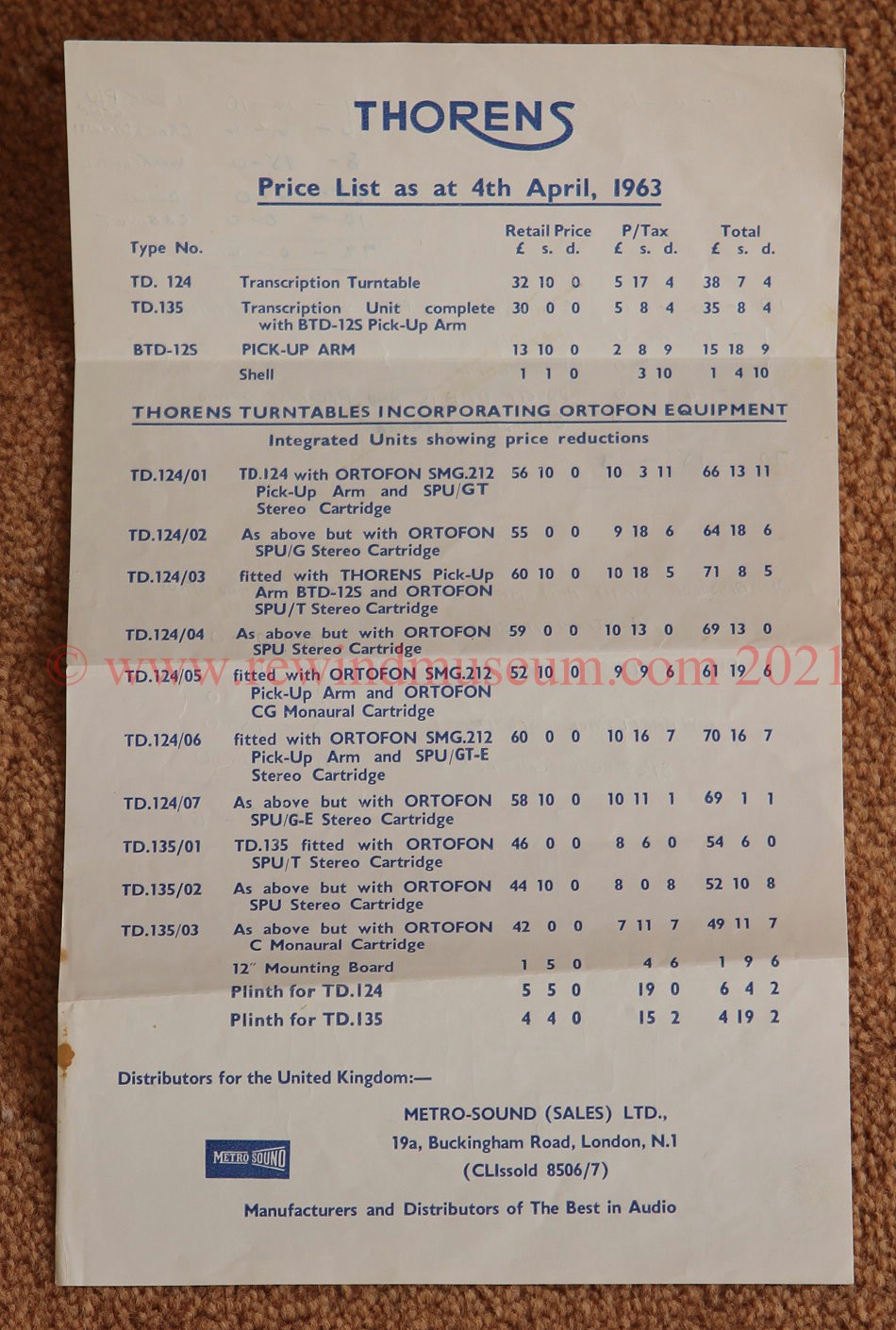

1965. Thorens TD 150 Mk1.
(with SME 3009 improved tonearm)
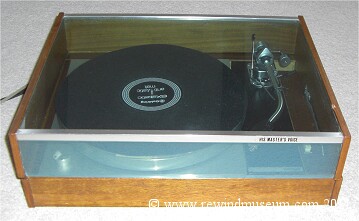
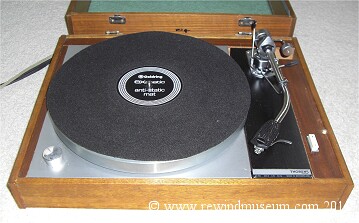
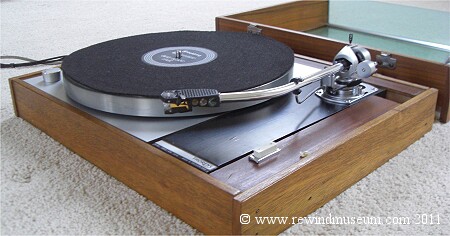
See an interesting article on the TD150 at
www.hi-fiworld.co.uk Here Haden Boardman compares
the Linn LP12 with the TD150 and comes to some interesting conclusions.
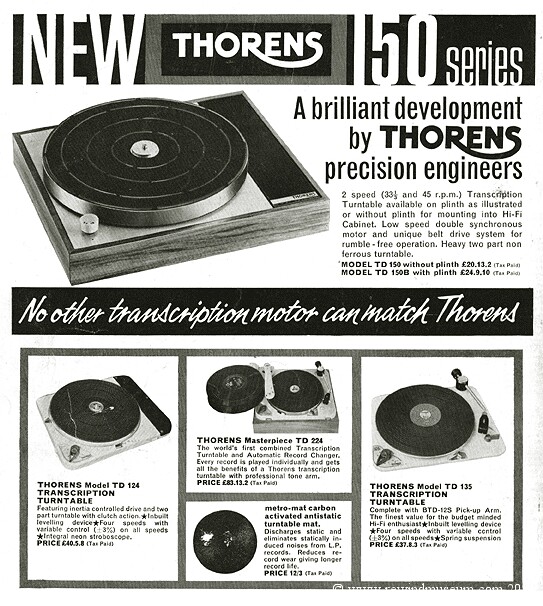
The advert above shows the TD 150 cost £24.50 including plinth, excluding tone arm and cartridge.

1952. The Connoisseur pick up arm and cartridge.
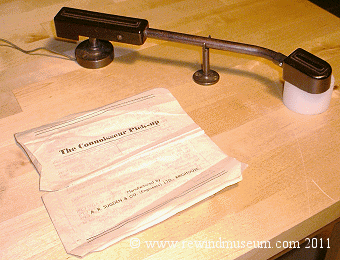
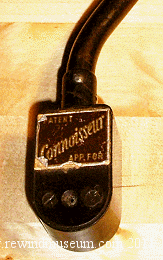
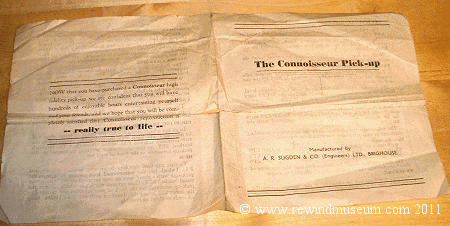
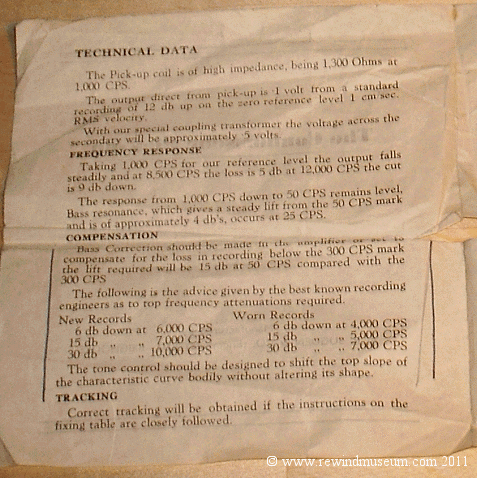
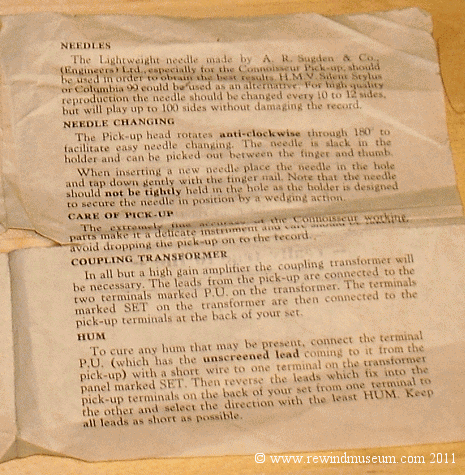
Arnold Sugden (1912) Early life - apprentice joiner and undertaker; making receivers and becoming interested in
developing transformers. No formal education in electronics. During World War II setting up own engineering firm
in Yorkshire, England. Engaged in precision tools. After war designing pick-ups beginning with a moving steel
needle system. Making precision turntables. Demonstrations in London and manufacturing under the name of
Connoisseur. Ideas on fine groove recording and design and moving coil cutter head. Demonstration
in early 1950s at Sound Recording Association of microgroove records. Making ceramic cartridge with
stereo channels. Thoughts of stereo, and recording with local music groups.
Decline in business leading to eventual closure (Details taken from a British Library archive.)
Shown below are some adverts from Wireless World magazines in 1952 of the Mk 1 arm.
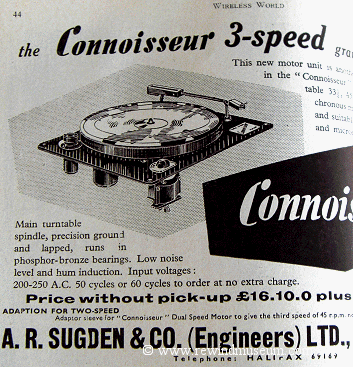
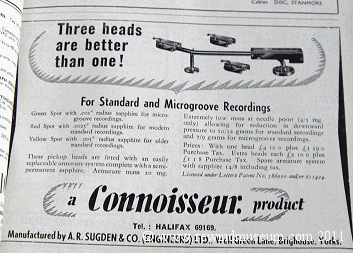
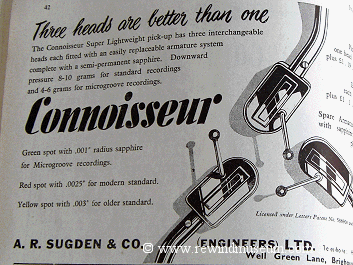
The advert below is from "The Gramophone Handbook" by Percy Wilson which was published in 1957.
Percy Wilson was the technical editor of Gramophone magazine. The advert shows the Mk 2 Connoisseur arm.


1969. Connoisseur BD2 turntable.
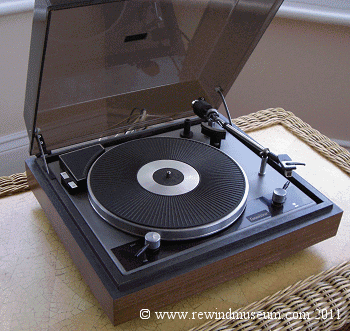
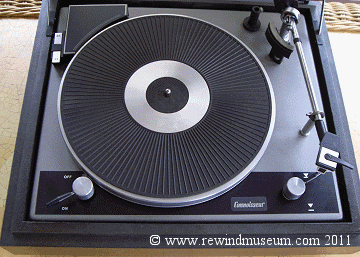
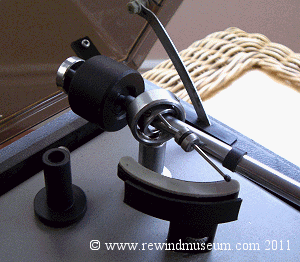
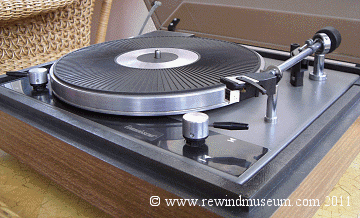
Connoisseur BD2 turntable unit. Price: £33 19s. 9d. (£34.98) including plinth, lid and SAU2 pickup arm.
Manufactured by A. R. Sugden & Co. (Engineers) Ltd. Market St. Brighotise. Yorks.
From the review in the July 1969 issue of "The Gramophone" -
"The Corinoissiur BD2 is an integrated system comprising a two-speed belt-drive turntable and the well-established
SAU2 pickup arm. The specification of both the turntable and arm show this system to be in the transcription
class and yet the relatively low price would seem to contradict this."
A new (never used) Garrard SP25 in manufacturers packaging
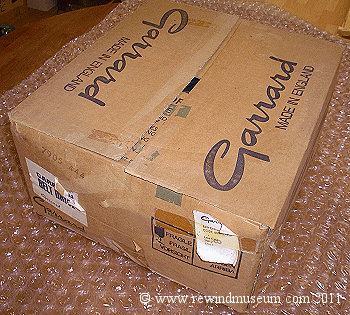
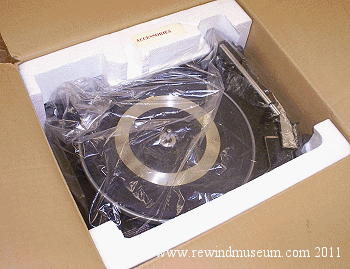
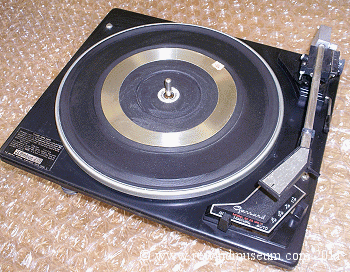
This unit has been in the collection since the 1970s. It is in perfect condition.
A pair of Garrard SP25 were frequently used as twin decks at a disco. It also found
it's way into many stand-alone record players similar to the Bush model on this page.
This turntable was first introduced in 1959.

1965 Garrard 401 turntable.

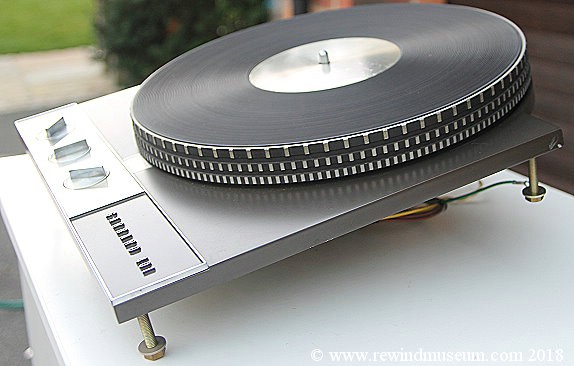
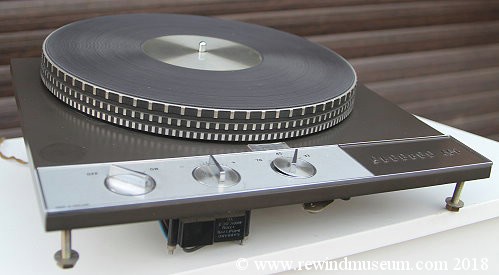
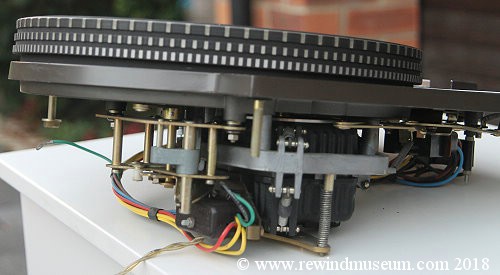
Garrard had been in business since 1721. They produced their first turntable in 1932 and their first record
changer turntable in 1938. In 1954 the Garrard 301 was introduced (see above) which was a serious Hi Fi
product. The popular SP25 Mk 1 (see a Mk 2 above) was introduced in 1959. The Garrard 401 was introduced
in 1965 to replace the 301. On the 4th Dec. 1973 I purchased a second hand Gerrard 401 turntable for
£25.95. It was installed in a large plinth SME 2000 plinth and it was used with an SME 3009
pick up arm for a few years. In 2013 this one came into the museum.

Garrard S.P.G.2 Stylus Gauge.
1956 approx.
Manufactured by The Garrard Engineering and Manufacturing Co. Ltd., Newcastle Street, Swindon, Wilts, England.
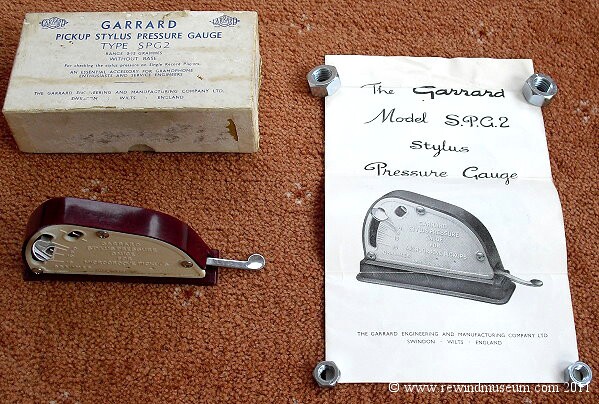
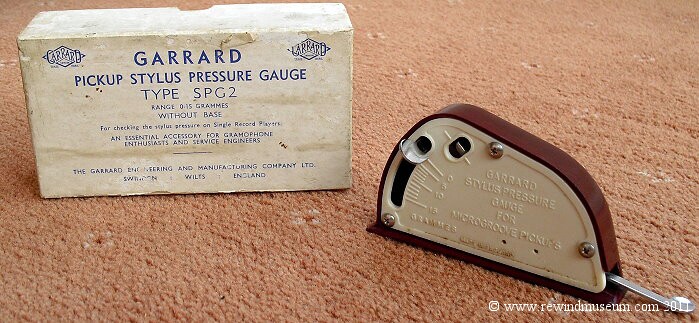
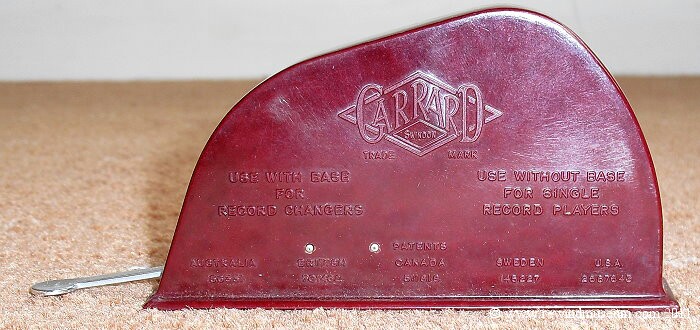
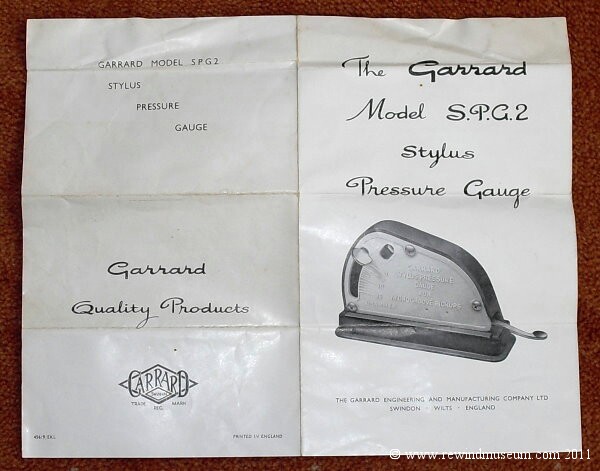
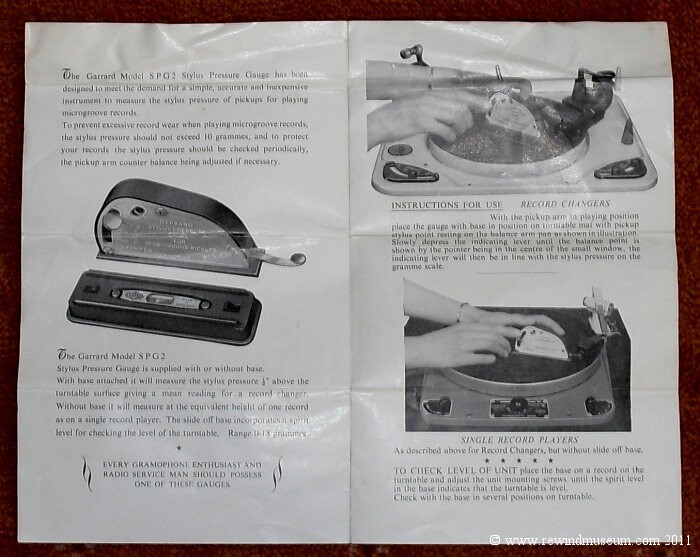
Since the Garrard S.P.G.3 was introduced in 1960 (and reviewed in the Gramophone magazine the same year,) the SPG2
must be pre-1960. Assuming it to have been in production about for 3 or 4 years this would date it at 1956 approx.
Sometimes there is a code on the leaflet that indicates the year of manufacture. The code on this leaflet is 456/9/ELK
and so it is just possible the "56" may be the year. This adds some credibility to the estimation date.
The Garrard Engineering and Manufacturing Co. Ltd., was formed in 1915 and moved to Swindon in 1919.
In 1920 they developed the spring wound motor for gramophone companies. In 1928 they developed electrical motors
for gramophones, which resulted in a belt drive motor. The first Garrard gramophone was introduced in 1930.
In 1932 The first Garrard record changer was developed. Garrard was sold to Plessey’s in 1960.
In 1979 Garrard was sold to Gradiente Electronica of Brazil and in 1992 the company closed

1962. Goldring Lenco 88 turntable.
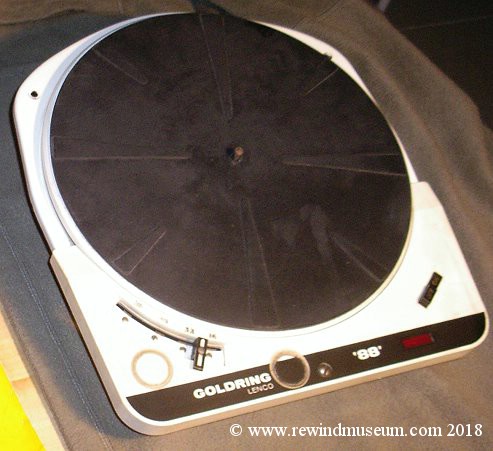
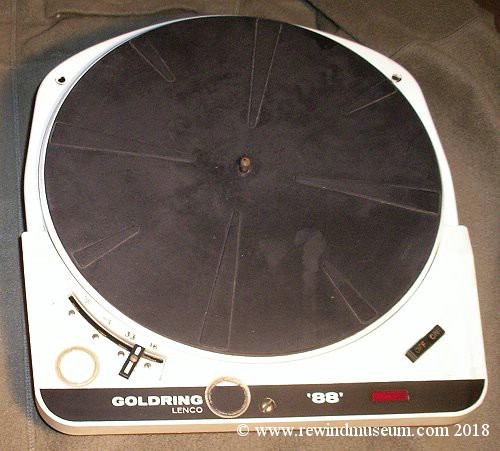
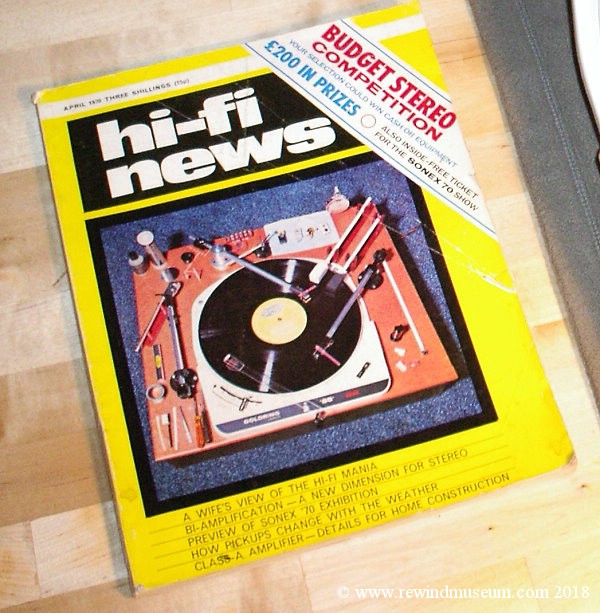
Goldring built this deck in response to the Garrard 301. they wanted a high quality chassis
that allowed customers to add their own pick up arm and plinth.
This turntable was a response to the Garrard 301 unit. Goldring saw a market for a chassis, like the 301
where the customer could add a plinth and arm of their choice. The unit was cheaper than the 301 but
was still very good quality. This unit has been in the collection since 1980 approx.
Also see above - Hi Fi News magazine - April 1970.

1969. Goldring Lenco GL75 turntable.

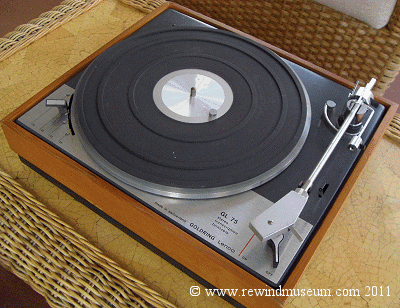
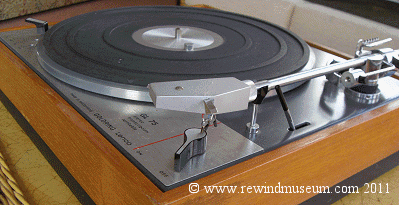
This turntable, at the time, was considered to be one of the best available.
It used a heavy 8lb platter and had a high quality motor. The drive was transmitted by an idler wheel.
The main criticism when the SME pick-up arm was available was that the arm was too massive
and lower mass arms with lighter headshells became the norm. It was fitted into large
cabinet Hi Fi systems that included the amplifier radio and speakers. Companies like
Leak used in it there combined units. It was also available separately, either as a chassis
or in a plinth. It was a higher quality (and more expensive) that most Garrard turntables.
This one has been in the collection since the late 1990s.
There is a review on the Golding Lenco GL 75 in "Hi Fi News" magazine in 1969
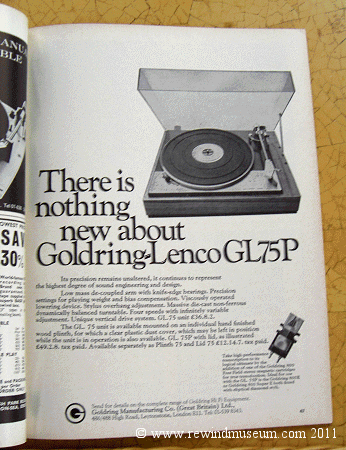
This advert from Hi Fi sound magazine in Feb. 1970 shows the GL75 chassis with arm at £36.40
the plinth and lid was £12.60 and the complete unit as illustrated was £49.00

1965. Goldring Lenco GL68 turntable.
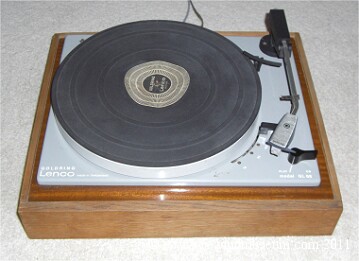
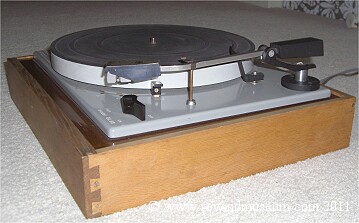
The GL 68, incorporate the new G.65 arm. This is of low-mass tubular construction with sliding
counterweight, Swiss manufactured precision motor. Click-in positions for the 4 standard
record speeds. 12" diameter turntable. The turntable was reviewed in the May 1966 issue
of the Gramophone magazine. The price was 16 pounds and 16 shillings (£16.80) in 1966.
A Goldring cartridge added about £5.00 and a plinth and cover added a further £10.
this made the whole unit about £32 in a ready to use condition.
When most people look back on the 1960s and early 1970s they remember the very popular
GL75. Indeed the GL 75 was deployed in a number of Hi Fi units / "radiograms"
from various manufacturers (including "Leak") at the time. The GL 68 is
probably less well know, but that makes it more interesting to a museum.
See the "HiFi News" article below from August 1965
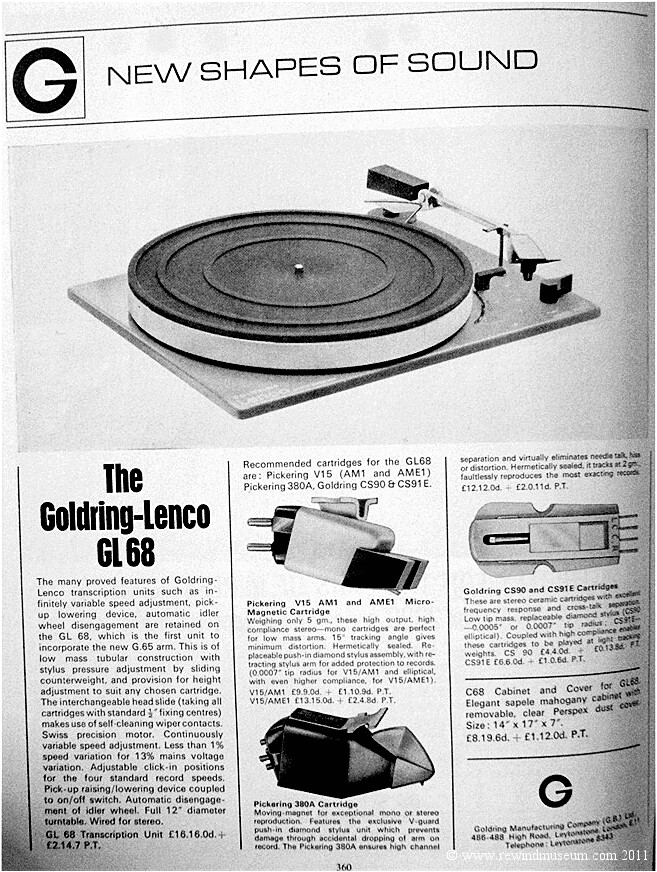

The Pye Black Box. 1954.
(Possibly 1957).
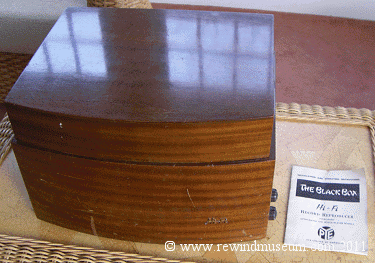
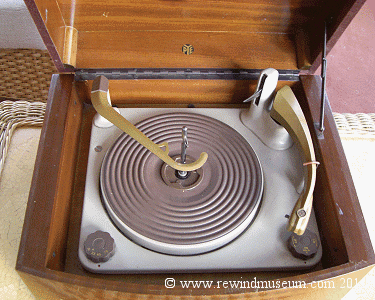
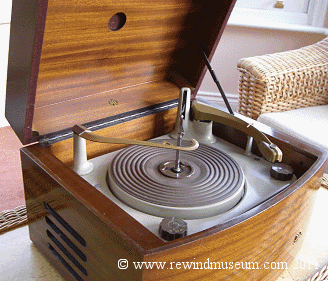
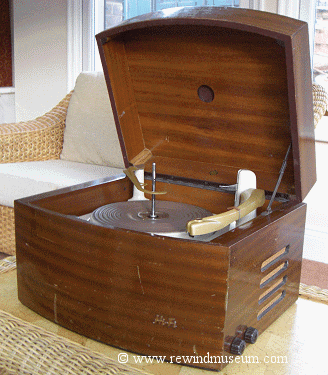
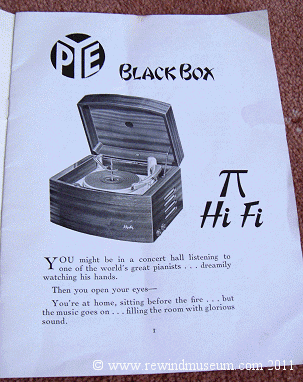
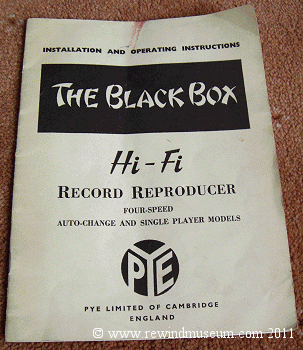
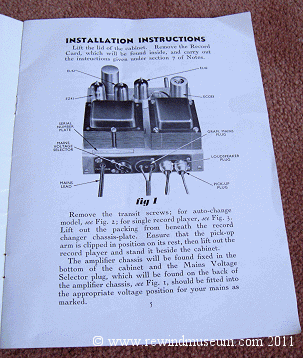 The first record player of it's kind in the UK.
The first record player of it's kind in the UK.
Pye introduce, in 1954 an integrated record player with a built in valve (tube)
"Hi Fi" amplifier and twin speakers, one on each side and at an affordable price.
It was not stereo but no other unit up to that point used twin speakers, one on each side.
The last digits on the back page of the original manual are 57 and this may indicate
that this unit may have been manufactured in 1957.
The earliest 1954 BBH version used 4 E-series valves and a 2.5W push-pull output.
The later MkII variant had an ultra-linear output transformer and delivered 4W
The turntable is a BSR Monarch Mk 1 autochanger in cream and re- badged PYE.
The original stylus / cartridge (shown above) was a high-output crystal turnover
type with a tracking weight of around 12g See a wireless world advert from 1952 below
for the BSR turntable.
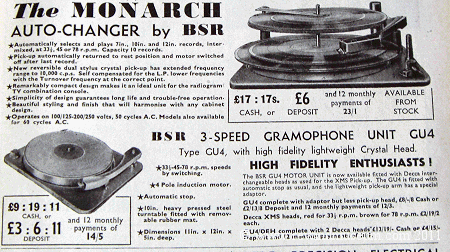
Referring to the Pye Black box,
"Gramophone" magazine in 1955 said, "Never before had so compact a unit provided this
high fidelity reproduction with such a room filling quality of sound. It plays all
speeds of record." The manufacturer was Pye Ltd. of Cambridge, England,

Bush Record Player RP60 Autochanger.
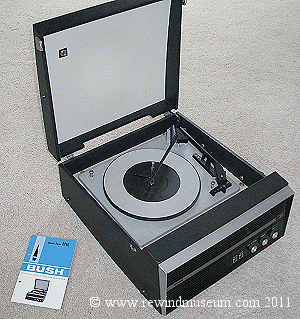
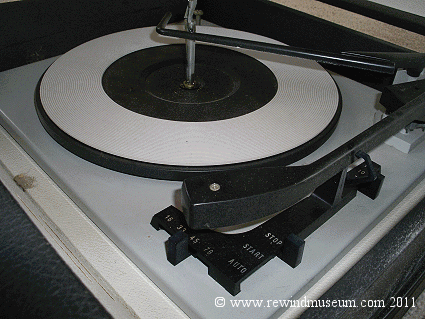
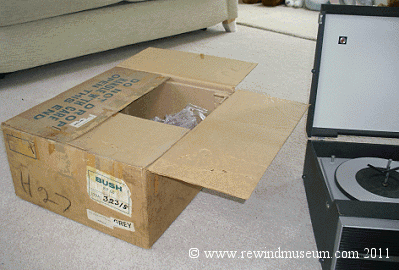
Record player speeds, 16, 33, 45 and 78. Also adjustments for record size e.g. 12 inches.
Records can be stacked and automatically changed.
This unit is complete with manufacturers box, packaging and manual and in mint condition.
It is typical of the type of unit found in many homes of that era. Typically the middle to
late 1960s. The numbers on the back of the RP60's manual suggests it may have
been 1970. The styling on this one also does suggest a late model design.
These were low cost units with built in amplifier and speaker and were portable.
Not 12 volts, 240 volts only but easy to carry from one room to another and easy
to put away. They were not classed as Hi Fi but produced acceptable results and
were very popular. There may have been a Hi Fi radiogram or separates in the house
as well and so units like this would may have been used by teenage children.
This unit was recently donated to the museum.


1955. Angel 17A Unipivot Transcription Pick-Up Arm.
From E.M.I. International Ltd, Hayes, Middlesex, England. (The manufacturer of Angel Records.)
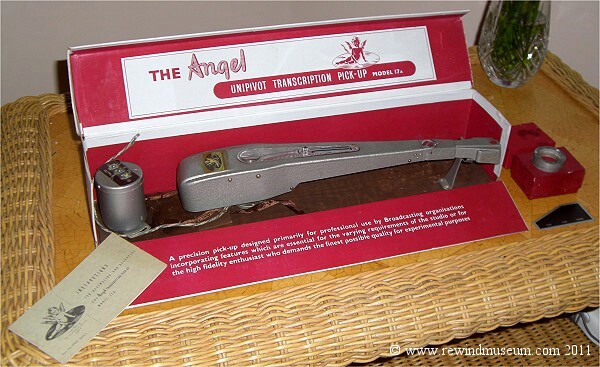
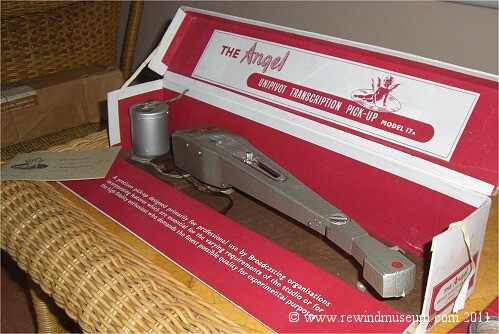
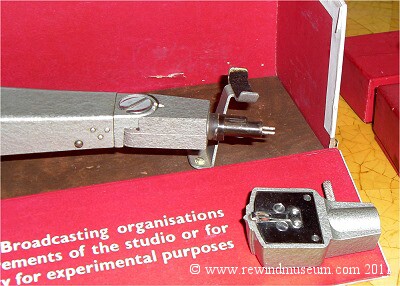
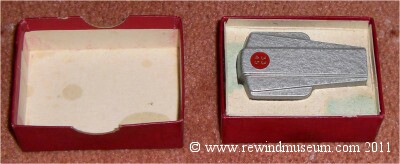

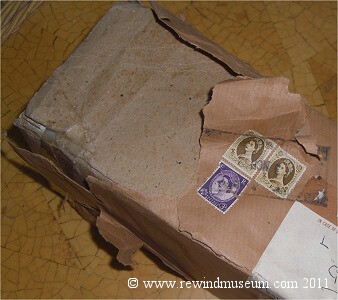
This pick up arm from 1955 was 16-inches long. As you can see the complete kit is shown with
original boxes. The stamps have a value of 3 shillings and 3 old pence which is about 16p in
today’s money to post this item to the customer in 1955. This Angel arm was used by the BBC.
It must have been supplied direct from the manufacturer as there is an EMI post label
on the box (see below). EMI owned The Gramophone Company and Angel Records.

See the owners manual below.
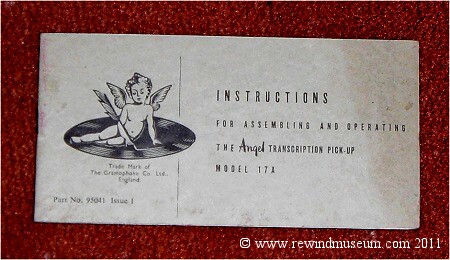
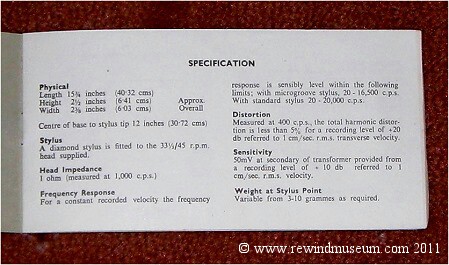

See below an article from Popular Electronics - October 1955 including this Angel 17a arm.
It was manufactured and sold in the UK but also it was sold in the USA for $89.50 in 1955
(The average monthly wage in the USA in 1955 was about $350)
The Model 17A Arm was manufactured by Angel Records which was part of The Gramophone Co. Ltd.
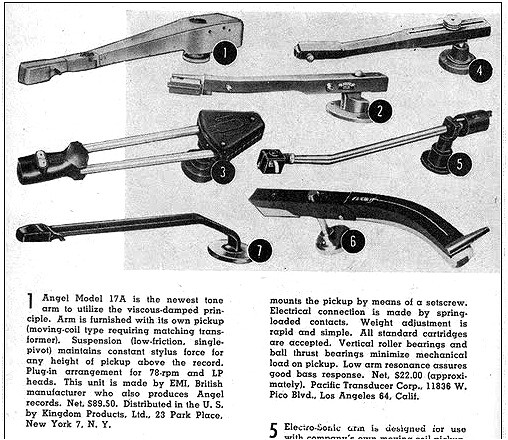

Ediswan Minor Pick-Up arm.
1955 approx.
Produced by B T-H (British Thomson-Houston Co., Ltd) in Coventry, England and
distributed by the Edison Swan Electrical Co. Ltd.


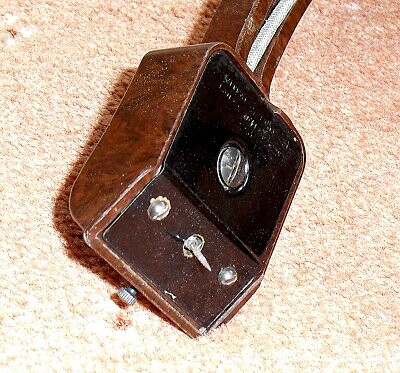
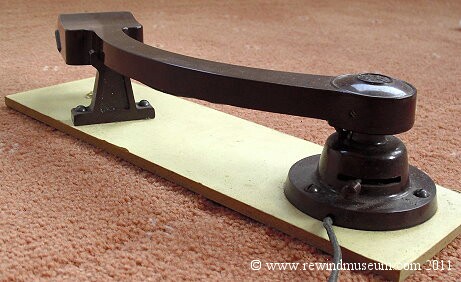
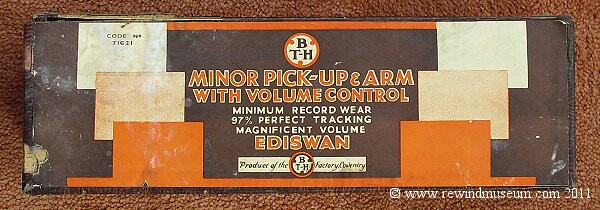
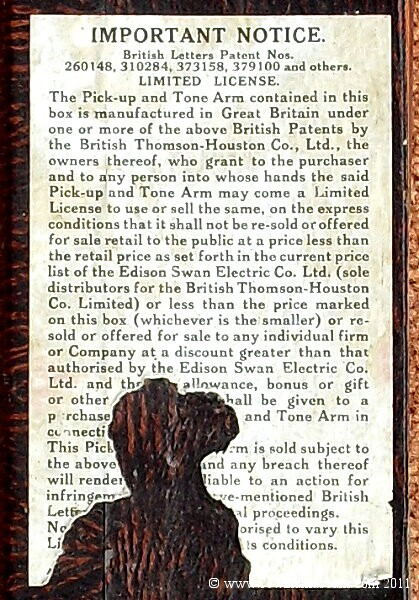
BTH were making carbon microphones in the 1930s. There are records of the company still trading in 1976.
The sticker on the box is very interesting. It is illegal to fix a retail price these days but
in the 1950s there was a limited license of trading available and it seems the manufacturer could
take action against a dealer if they sold a product below the recommended retail price.

1956. Acos G.P.32 Magnetic Pick-Up Arm.
1956 approx.
Manufactured by Cosmocord Ltd. Eleanor Cross Road, Waltham Cross, Herts, England.
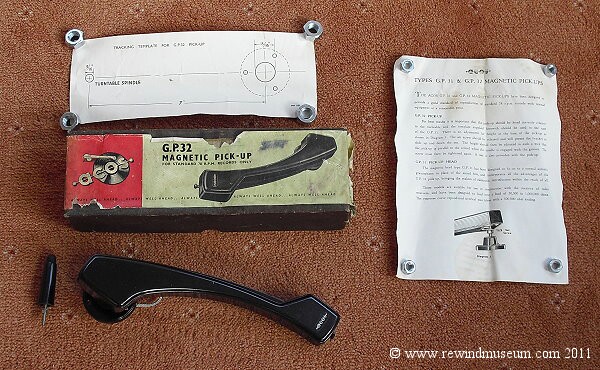
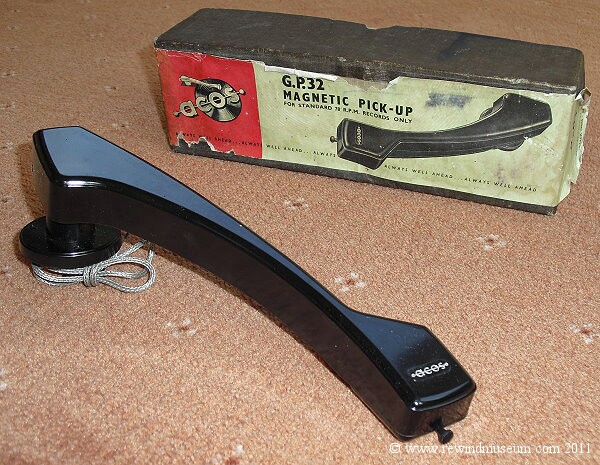
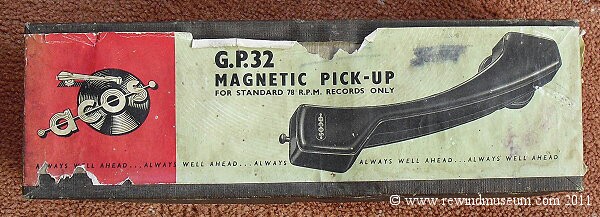
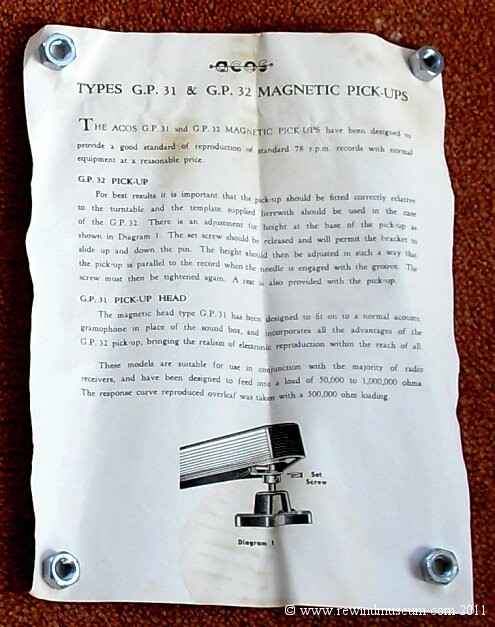

Cosmocord Ltd were originally at Enfield and they relocated to Waltham Cross in 1956. They made
crystal microphones in the early 1950s. Cosmocord (Acos Works) were still making pick up cartriges
in the 1960s as shown in a January 1968 "Gramphone" Magazine article
From
https://tatra-rotalac.com it looks as though Tantra Plastics absorbed Cosmocord Ltd. from the receiver in 1982

1930s Cosmocord Model 15 Pickup Arm.
Manufactured by Cosmocord Ltd. Eleanor Cross Road, Waltham Cross, Herts, England.
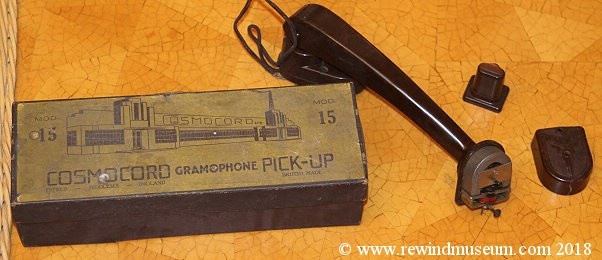
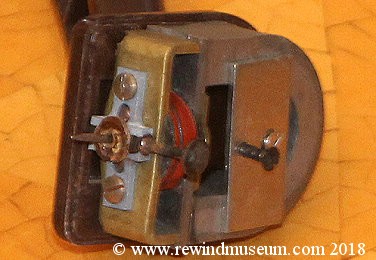
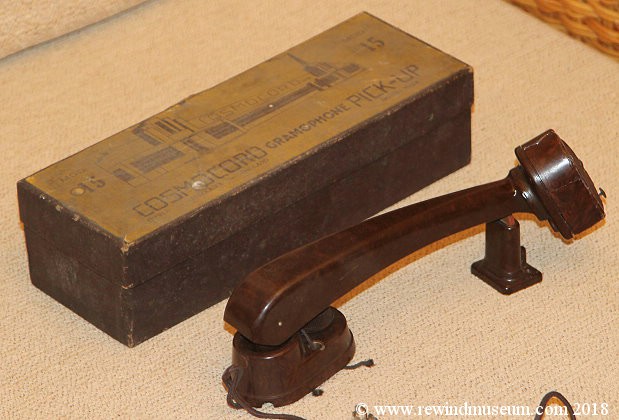
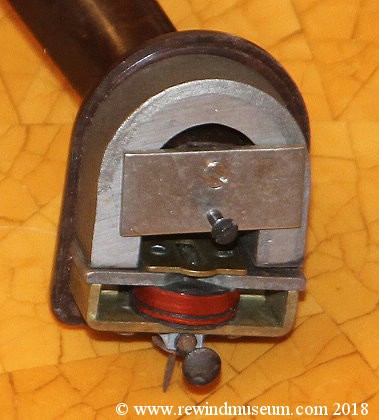
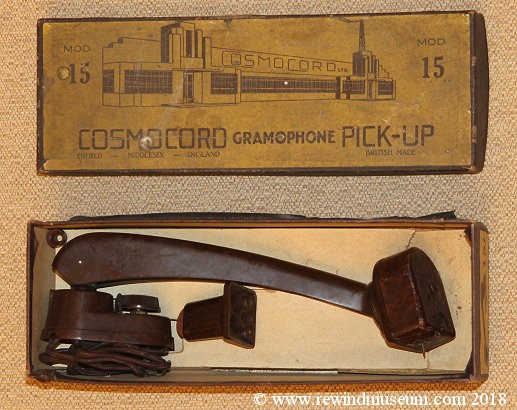
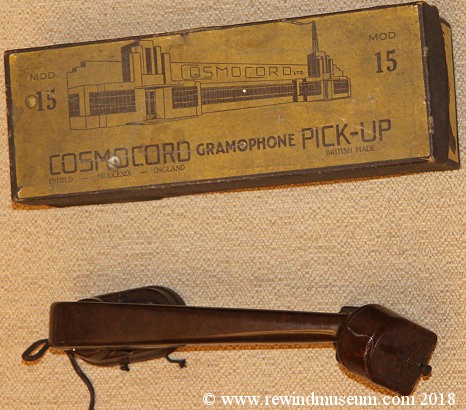
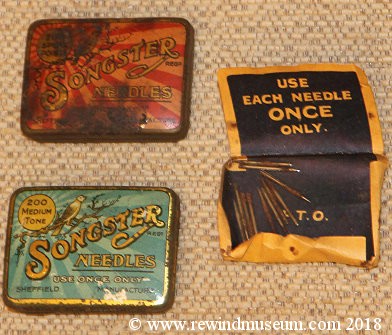
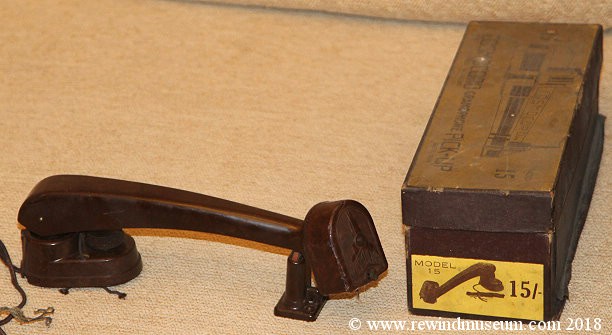
Cosmocord Ltd were originally at Enfield and they relocated to Waltham Cross in the 1956. The Acos pick up
arm above was made at the new factory. This pick up arm is complete with arm rest in it's original box.
Also notice the 2 tins of spare needles. You can see on the side of the box, the arm cost 15 shillings
which is £0.75 That would be about £50 in 2018. This pickup arm came from Mr
Charles Swift (junior).
See an interesting YouTube demonstration of this pick up arm below.
Cartridges from the past.


Left to right above - Ortofon FF15e Mk2, Shure M44, Empire 999 QE/X, Goldring G800, Collaro 57.
Ortofon FF15e Mk2 (1980s), Shure M44-7 (1978-present), Empire 999 QE/X (1970s),
Goldring G800 (1969), Collaro 57 (Late 1950s).

These cartidges came from Mr
Charles Swift (junior).
From Hi Fi News magazine. April 1958.
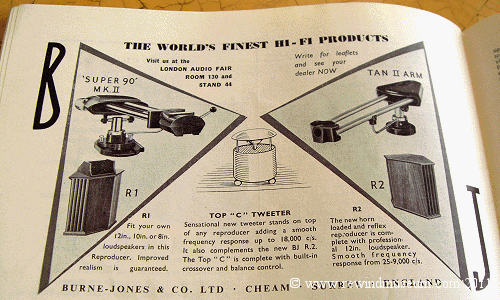
This pick up arm is very interesting as it uses twin arm tubes. Looks like quite a high mass design.
Even so, for 1958 it was probably very advanced.
Check out the
Popular Electronics article and the notes below. It looks like this arm
(or an earlier version) was available from 1955 and was called a BJ arm from Hi-Fidelity Inc.
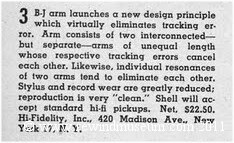
Practical Wireless magazine. March 1963

This is an interesting magazine as the main feature details a turntable with parallel tracking.
The idea is to eliminate tracking error due to the tone arm taking a curved patch over the record.
 Making a donation.
Making a donation.
The Rewind Museum is a non-profit making endeavour. The web site and the touring exhibitions are run on
a voluntary basis. Donations,
not money, just old items you no longer want, are always welcome.
If you have something that you think would be of interest, please contact us with the details.
We can send in a courier to pick them up. (Even an international courier). Thank you.
Please note - The Rewind Museum site has been archived by the British
Library so that future generations can always access the site's content.
To talk to us about making a donation please go to - "
making a donation".
Are you interested to read about a 10 year + restoration of a classic vehicle?
If so go to -
www.1952chevytruck.com
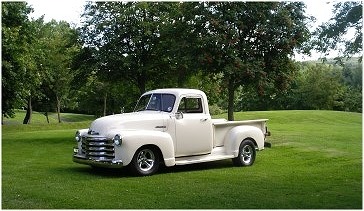 The 1952 The 1952 Chevy truck web site.
The 1952 The 1952 Chevy truck web site.

Web site copyright © 2018 Vision International. All rights reserved.
For all questions & comments about this site's content contact Dave at Rewind Museum.











































